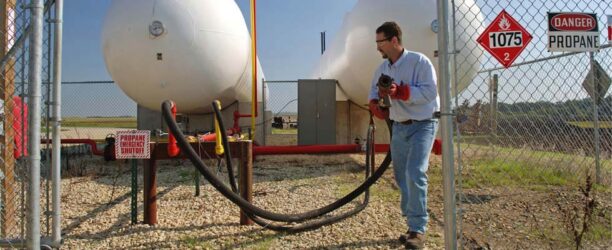When and How to Upgrade Your Propane Equipment

Consistently maintaining propane equipment and upgrading it when necessary is critical for establishing both efficiency and safety. How do you know when to upgrade and what are the best steps to take to do so? Here’s a comprehensive overview.
Signs It’s Time to Upgrade
Decreased Efficiency
If you notice your propane equipment is using more fuel to perform the same tasks, it’s a sign that it may be time for an upgrade. Older equipment can become less efficient, leading to higher operating costs.
Frequent Repairs
When your equipment requires frequent repairs, replacing it is often the more cost-effective path. Constantly fixing old equipment can be expensive and time-consuming. Newer models typically require less maintenance and are more reliable.
Safety Concerns
Safety should always be a top priority. Upgrading is essential if your propane equipment has safety issues, such as leaks or outdated safety features. Modern equipment adheres to the latest safety standards, thereby facilitating a hazard-free operation.
Technological Advancements
Advancements in technology can make newer propane equipment more efficient and user-friendly. Upgrading to the latest models can provide benefits such as better fuel efficiency, improved control systems, and enhanced safety features.
How to Upgrade Your Equipment
Assess Your Needs
Start by assessing your current equipment and determining your needs. Consider factors such as the age of the equipment, its current performance, and any specific features you require in the new models. This will help you choose the right upgrades.
Research Options
Research the available options for new propane equipment. Look for reputable brands and read reviews to understand the performance and reliability of different models. Compare features and prices to fit your needs and budget best.
Consult with Experts
Consulting with propane equipment experts can provide valuable insights. They can assess your current setup, recommend suitable upgrades, and help you understand the benefits of different options. Expert advice ensures that you make informed decisions.
Plan Your Budget
Upgrading equipment can be a significant investment, so planning your budget carefully is important. Consider the cost of the new equipment, installation fees, and any additional expenses such as permits or inspections. Look for financing options or rebates that can help offset the costs.
Schedule Installation
Once you’ve selected your new equipment, schedule the installation with a certified professional. Proper installation is crucial for ensuring the equipment operates safely and efficiently. A professional installer can also guide maintenance and operation.
Train Your Staff
Ensure that your staff is trained on how to use the new equipment. Proper training helps prevent accidents and prepares your team to operate the equipment efficiently. Many manufacturers offer training programs or resources to assist with this.
Practice Regular Maintenance
After upgrading, it’s important to maintain your equipment regularly. Follow the manufacturer’s maintenance guidelines and schedule routine inspections. Regular maintenance helps prolong the life of your equipment and ensures that it continues to operate efficiently.
Evaluate Performance
After the upgrade, monitor the performance of your new equipment. Compare fuel usage, efficiency, and maintenance needs with your previous setup. Evaluating the performance helps you understand the benefits of the upgrade and identify any areas for further improvement.













